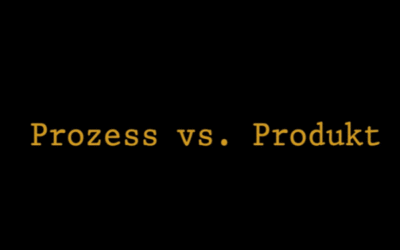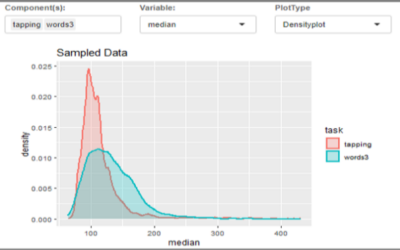What’s happening?
Inputlog meets Art
German artist, Klaus Oehler (*1985), created a fascinating video with Inputlog, setting up a dialogue between the process and the product of writing (‘Prozedukt’). Klaus Oehler studied Indology, Iranian Studies, and Mathematics at the University of Tübingen. He has been working in different fields of art since graduation in 2014.
>> Watch the video.
Inputlog Training school
Preceding the SIGWriting 2022 conference in Umeå (Sweden), a two-day research school is organized. From: Friday 17th June till Sunday 19th June 2022. During this event we will take care of a training session on Inputlog, also introducing the latest updates.
Copy task corpus dashboard
You can now explore, filter, and download a 5K+ corpus of copy tasks (open access) and dynamically compare the data with your own collected data.
Access the Inputlog <Inputlog copy task dashboard>.
New publications
Roeser, J., De Maeyer, S., Leijten, M., & Van Waes, L. (accepted for publication). Modelling typing disfluencies using Bayesian mixture models, Reading and Writing: An interdisciplinary journal | https://doi.org/10.1007/s11145-021-10203-z
Van Waes, L., Leijten, M., Roeser, J. Olive, T., & Grabowski, J. (2021). Measuring and assessing typing skills in writing research. Journal of Writing Research, 13(1), 107-153
https://doi.org/10.17239/jowr-2021.13.01.04 | PDF
Leijten, M., & Van Waes, L. (2020). Designing keystroke logging research in writing studies. Chinese Journal of Second Language Writing [二语写作], 1(1), 18-39 | PDF | reference corpus can be downloaded here.
Vandermeulen, N., Leijten, M., & Van Waes, L. (2020). Reporting writing process feedback in the classroom: Using keystroke logging data to reflect on writing processes. Journal of Writing Research, 12(1), 109-140 https://doi.org/10.17239/jowr-2020.12.01.05 | PDF | ![]() video
video
Bowen, N., & Van Waes, L. (2020). Exploring revisions in academic text: Closing the gap between process and product approaches in digital writing. Written Communication, 37(3), 322-364. https://doi.org/10.1177/0741088320916508
Van Waes, L., Leijten, M., Pauwaert, T., & Van Horenbeeck, E. (2019). A multilingual copy task: Measuring typing and motor skills in Writing with Inputlog. Journal of Open Research Software, 7(1:30), 1-8. https://doi.org/10.5334/jors.234
… and have access to the source code and more detailed background information on Github.
Swedish copy task added
The copy task is now also available in Swedish. You can complete the copy task in twelve languages now.
A heartfelt thank you to Åsa Wengelin and Lisa Bengtsson (University of Gothenburgh, Sweden). They were so kind to design the Swedish copy task.
Have a look?
Minor upgrade: Inputlog 8.0.17
In Inputlog 8.0.17 we are happy to introduce the following improvements:
- Versioning: new setting to store timed intermediate document versions
- Writers’ comments: possibility to add meta comments in a pop-up window upon closing a session
- Copy task analysis: Italian added
>> Download
Italian copy task added
The copy task is available in eleven languages, including now also Italian.
A heartfelt thank you to Alessandra Rossetti (University of Antwerp, Belgium). She was so kind to design the Italian copy task.
Have a look?
Introductory webinar
In June 2020 we were invited by our Chinese colleagues in Jinan to take care of an introductory webinar on Inputlog. We titled it “Using keystroke logging in your research … and in your classroom”.
It was presented at the 2nd Conference on Second Language Teaching and Research 2020, Shandong University (China) | ![]() subtitled video
subtitled video
Norwegian copytaks added
The copy task is available in ten languages, including now also Norwegian.
A heartfelt thank you to Anne Sætersdal Myklestad & Vibeke Ronneberg (Western Norway University of Applied Sciences & University of Stravanger, Norway). They were so kind to design the Norwegian copy task.
Have a look?
Minor Upgrade to Inputlog 8.0.05
In Inputlog 8.0.05 we are happy to introduce the following improvements:
- Pause analysis: the algorithm to define P-bursts has been refined;
- Revision analysis: the identification of ‘normal production bursts’ has been improved;
- Fluency analysis: the time labeling of intervals has been corrected;
- Source analysis: the recoding log file can now also be imported to correct and optimize your recoding frame.
Reference
If you publish or present a paper in which Inputlog has been used, please refer to the following article:
Leijten, M., & Van Waes, L. (2013). Keystroke Logging in Writing Research: Using Inputlog to Analyze Writing Processes. Written Communication 30(3), 358-392
DOI: 10.1177/0741088313491692
PDF











